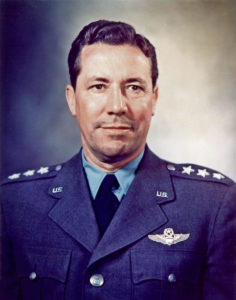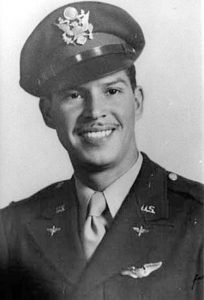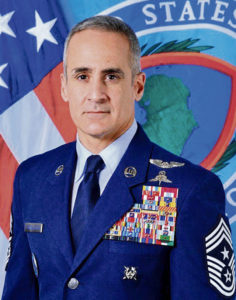National Hispanic Heritage Month, observed from Sept. 15 until Oct. 15, is an annual celebration of the accomplishments and contributions of Americans with ancestry from Spain, Mexico, the Caribbean, Central and South America.
The profound accomplishments of Hispanic Americans are particularly notable throughout the history of the U.S. Air Force.

Lt. Gen. Elwood Richard Quesada
Elwood Quesada was born in 1904 in Washington, D.C., to an Irish-American mother and a Spanish father. He enlisted in the U.S. Army Air Corps in 1924 and was commissioned as a reserve officer in 1925. In 1929, 2nd Lt. Quesada was a part of the five-man crew that developed air-to-air refueling during the famous “Question Mark” endurance flight and received the Distinguished Flying Cross for his contributions to the advancement of air technology. His influence on the U.S. Air Force continued as he was integral in the development of tactical air-ground warfare. As commanding general of the 9th Fighter Command, Lt. Gen. Quesada flew into Normandy on the day after D-Day, established headquarters, and directed 1,500 aircraft in aerial cover and close air support for the Allied invasion.

Maj. Oscar F. Perdomo
Oscar Perdomo was born in 1919 in El Paso, Texas, to Mexican parents. He enlisted in the U.S. Army Reserve in 1942, entered the Aviation Cadet Program of the U.S. Army Air Forces in 1943, and was commissioned as a second lieutenant in 1943. Perdomo flew 11 combat missions and holds the distinction of being the last World War II “Ace in a Day,” having destroyed five Japanese aircraft during one mission on Aug. 13, 1945. Perdomo was awarded the Distinguished Service Cross for his actions during WWII. Perdomo continued to serve in the Army Air Forces and was transferred in 1947 to the newly formed U.S. Air Force.

Chief Master Sgt. Ramón Colón-López
Ramón Colón-López was born in 1971 in Ponce, Puerto Rico. He enlisted in the U.S. Air Force in 1990 and became a pararescueman in 1996. Over the course of his career, Chief Master Sgt. Colón-López has deployed in support of numerous operations to include Operation Southern Watch, Operation Northern Watch, and Operation Enduring Freedom. In 2004, Colón-López was on an operation in Afghanistan, when his helicopter was shot down. Despite the damage, unsure of enemy size, and still under fire, he pressed forward, overrunning enemy positions. His actions resulted in 10 enemy apprehensions, two enemy kills, and the destruction of enemy weapons. In 2007, Colón-López became one of the first six Airmen, and the first Hispanic, to be awarded the Air Force Combat Action Medal.
Throughout Hispanic Heritage month, we take this time to reflect and recognize the impact and accomplishments of those who choose to serve our nation and to appreciate the value and enrichment that cultural diversity brings.
“The way I see it, the U.S. Air Force values diversity for many reasons,” Colón-López said. “The main one being diversity of thought. Different upbringings give us different perspectives to come up with great solutions to very complex issues. That is the power of America, and that is why I am proud to be an American Airman.”







